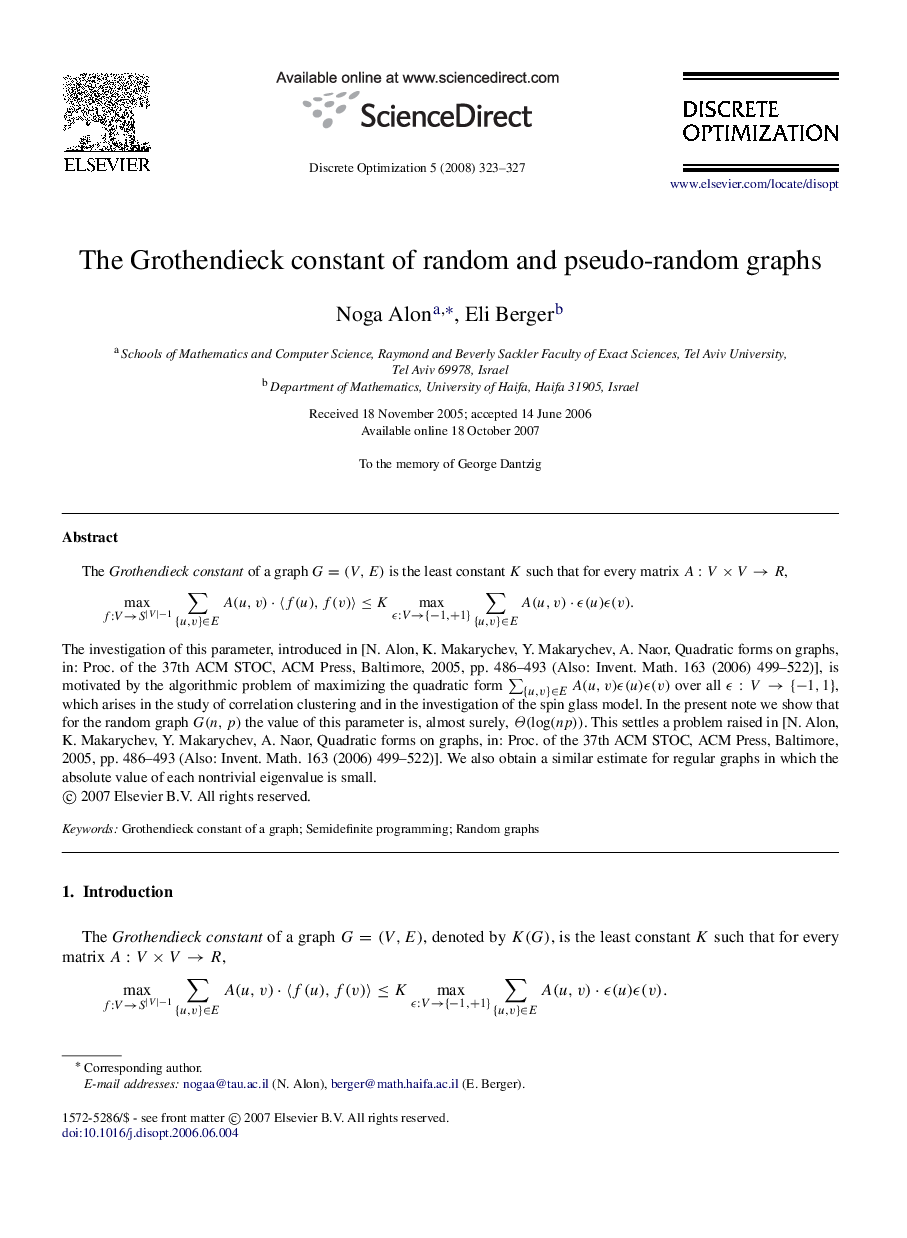| Article ID | Journal | Published Year | Pages | File Type |
|---|---|---|---|---|
| 1141847 | Discrete Optimization | 2008 | 5 Pages |
The Grothendieck constant of a graph G=(V,E)G=(V,E) is the least constant KK such that for every matrix A:V×V→RA:V×V→R, maxf:V→S|V|−1∑{u,v}∈EA(u,v)⋅〈f(u),f(v)〉≤Kmaxϵ:V→{−1,+1}∑{u,v}∈EA(u,v)⋅ϵ(u)ϵ(v). The investigation of this parameter, introduced in [N. Alon, K. Makarychev, Y. Makarychev, A. Naor, Quadratic forms on graphs, in: Proc. of the 37th ACM STOC, ACM Press, Baltimore, 2005, pp. 486–493 (Also: Invent. Math. 163 (2006) 499–522)], is motivated by the algorithmic problem of maximizing the quadratic form ∑{u,v}∈EA(u,v)ϵ(u)ϵ(v)∑{u,v}∈EA(u,v)ϵ(u)ϵ(v) over all ϵ:V→{−1,1}ϵ:V→{−1,1}, which arises in the study of correlation clustering and in the investigation of the spin glass model. In the present note we show that for the random graph G(n,p)G(n,p) the value of this parameter is, almost surely, Θ(log(np))Θ(log(np)). This settles a problem raised in [N. Alon, K. Makarychev, Y. Makarychev, A. Naor, Quadratic forms on graphs, in: Proc. of the 37th ACM STOC, ACM Press, Baltimore, 2005, pp. 486–493 (Also: Invent. Math. 163 (2006) 499–522)]. We also obtain a similar estimate for regular graphs in which the absolute value of each nontrivial eigenvalue is small.
